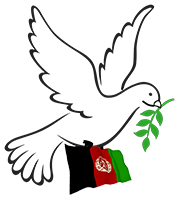Meanwhile, the acting minister of higher education said that the Ulema [Islamic scholars] have the responsibility of preserving the Islamic system.
The deputy prime minister for political affairs of the Islamic Emirate said that the current Afghan government is not isolated and is improving in political areas.
Speaking at a graduation ceremony of religious students in Kabul, Mawlawi Abdul Kabir said that the Islamic Emirate wants positive relations with the whole world.
“The Islamic Emirate is in practical engagement with the world, and it is not in isolation. All Afghans must be sure that we are neither in economic nor political isolation and these areas are getting stronger,” said Mawlawi Abdul Kabir, the deputy prime minister of political affairs.
Mawlawi Abdul Kabir added that the Islamic Emirate has free economic and trade relations with the regional countries and that the world has nobother option but to engage with the caretaker Afghan government.
He said that the Islamic Emirate wants positive relations with all countries including Russia and the US.
“We say to the world that they have no option but to engage with the Islamic Emirate, because there is no one to engage with as a representative of Afghanistan,” said Mawlawi Abdul Kabir, the deputy prime minister of political affairs.
Meanwhile, the acting minister of higher education said that the Ulema [Islamic scholars] have the responsibility of preserving the Islamic system.
“Your goal should not be to become materialistic; it is a fact that the government needs Ulema [religious scholars]. There is not an administration in the Islamic government which does not need a religious scholar,” said Neda Muhammad Nadim, the acting minister of higher education.
The acting minister of vice and virtue said that freedom of speech came to existence during Islam and that media should not abuse the freedom.
“I say to my dear brothers in the media, that the freedom of speech has been established by Islam. The freedom is for building not destroying,” said Muhammad Khalid Hanafi, the acting minister of vice and virtue.
Hanafi added that all people living in Afghanistan are equal under Islamic Emirate rule, and that the government wants to address all the problems of people.
 Afghanistan Peace Campaign
Afghanistan Peace Campaign




